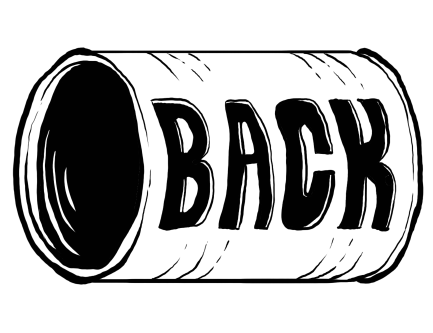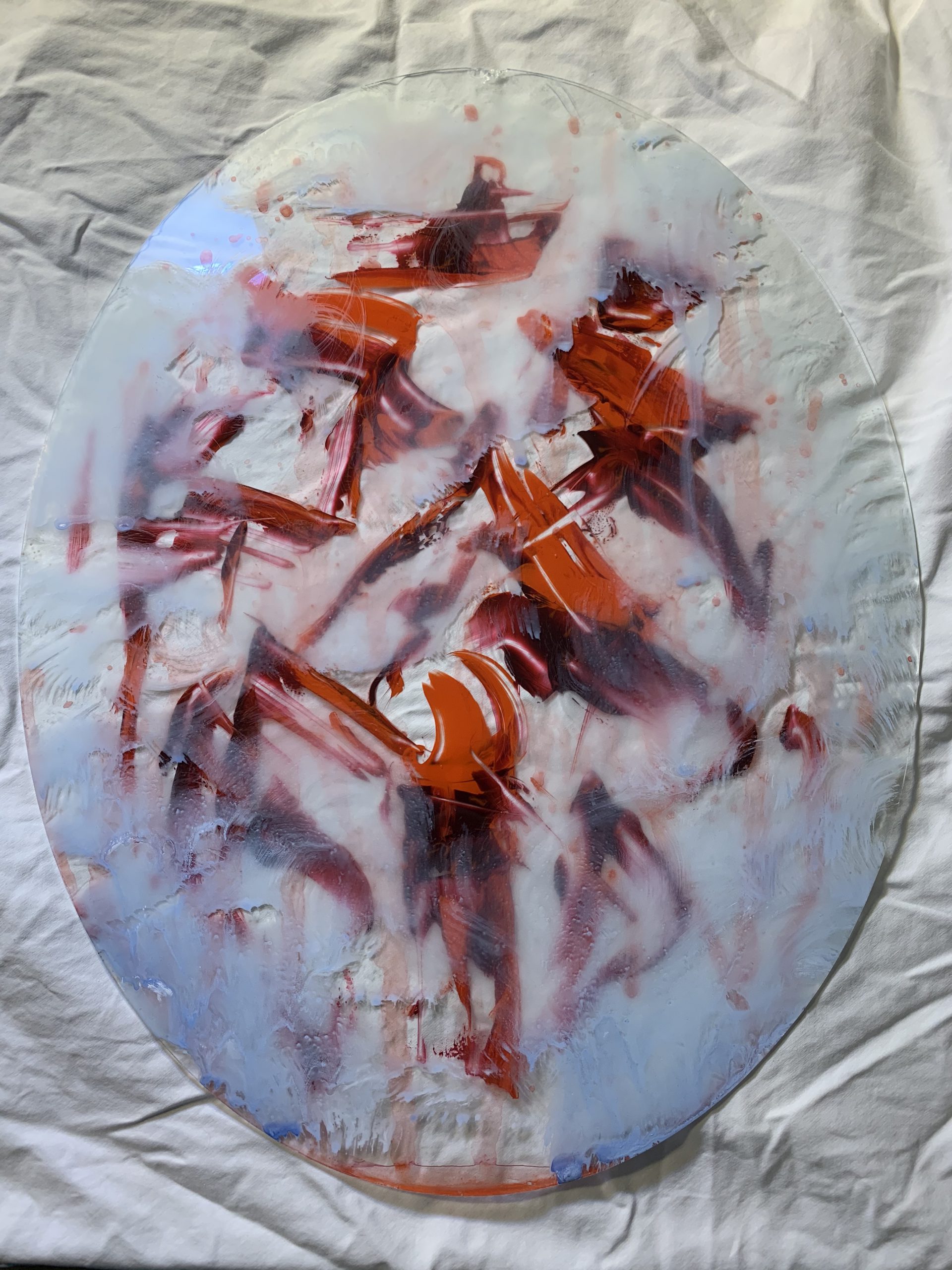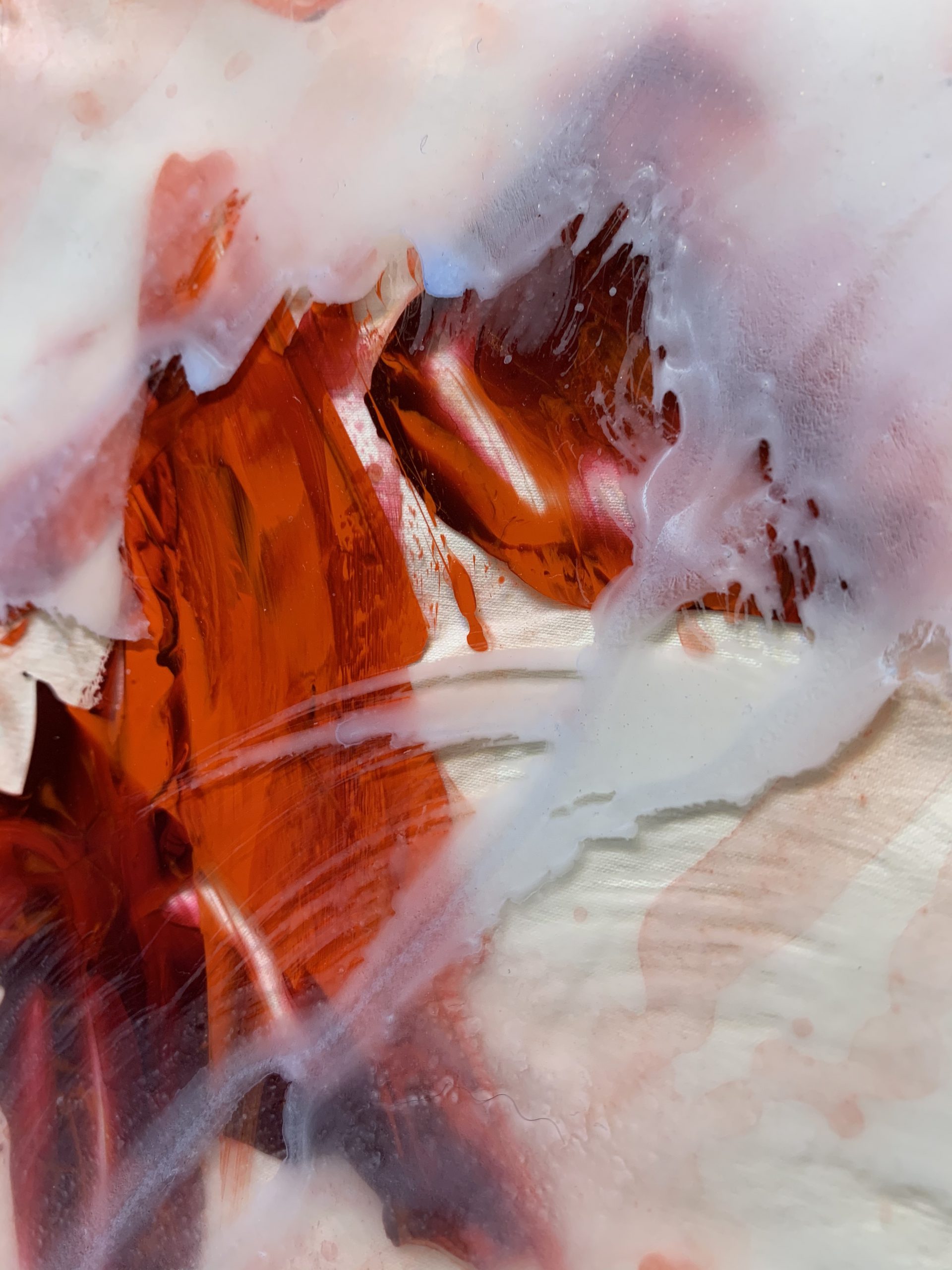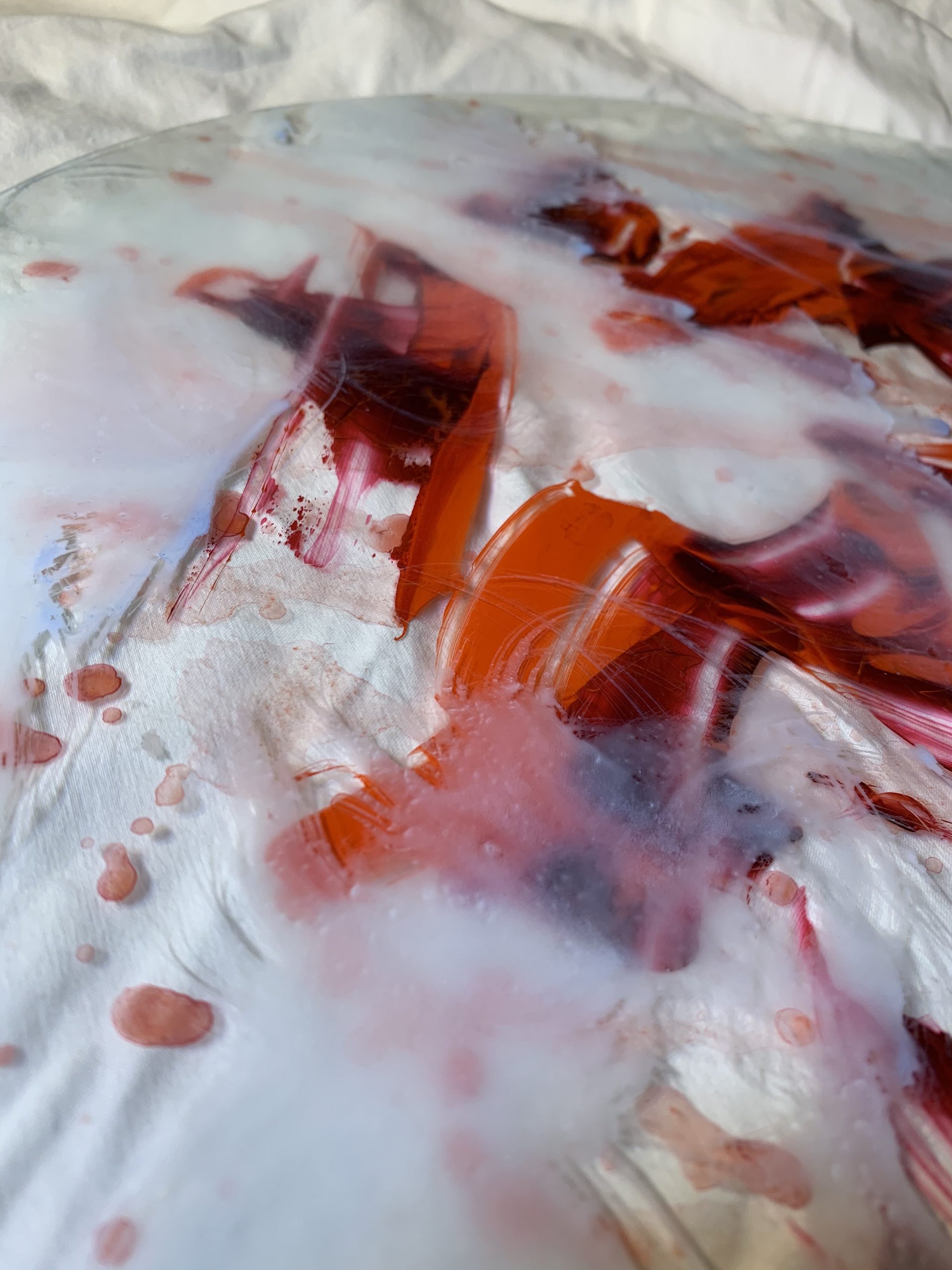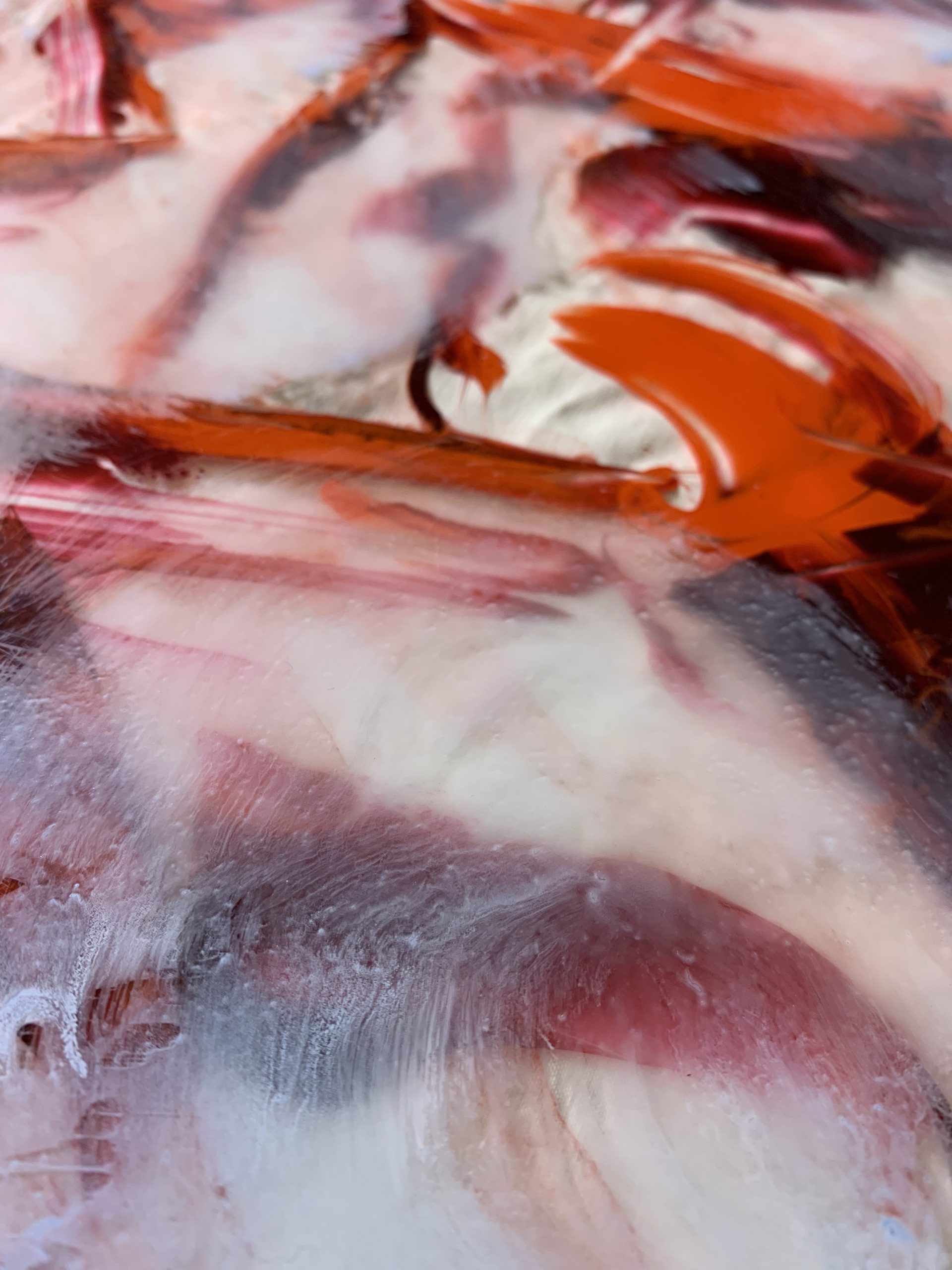Resonance is a collection of process based video and digital paintings. My inspiration comes from nature and psychedelic experiences which I consider sources for mental healing. The sources for a lot of the original paintings were photographs I took of fungi in woods near where I live as well as other natural formations such as snow, ice formations and wasp nests. I made abstract watercolor paintings based on these photographs and digitally collaged them with the original photographs to make kaleidoscopic images. From there I imported the images into an AI program where the AI created its own images. I then stitched the images together to make moving images.
I thought a lot about how mushrooms are made of threads which they use to communicate. I connected that to the fiber optic threads that make digital communication possible. This led me to thinking about the parallels between human and fungi communication and how communication of experiences can heal. My paintings were all made while under the influence of lysergic acid diethylamide (LSD), or based on visual experiences while on psilocybin mushrooms, LSD and dimethyltryptamine (DMT). I have found that these experiences opened my mind to better communicate not only with others, but more importantly, myself.
Introspection can be hard when we live in a world filled with constant outward stimulation. When viewing my own art, I feel relaxed, entranced, like everything will be alright. Embracing the compositional simplicity of centrality and symmetry, my works center the meditative qualities of making and pleasures of viewing.
